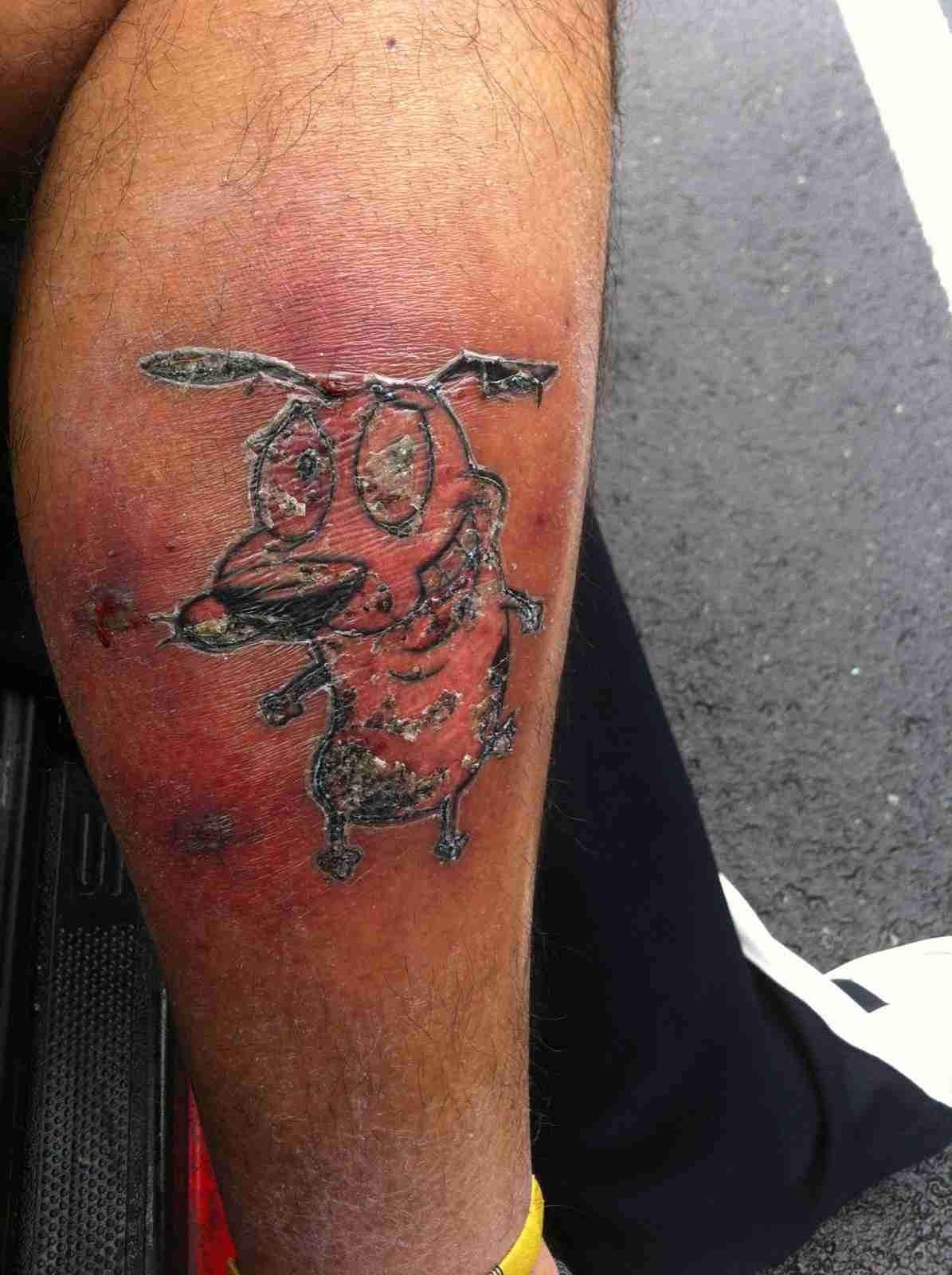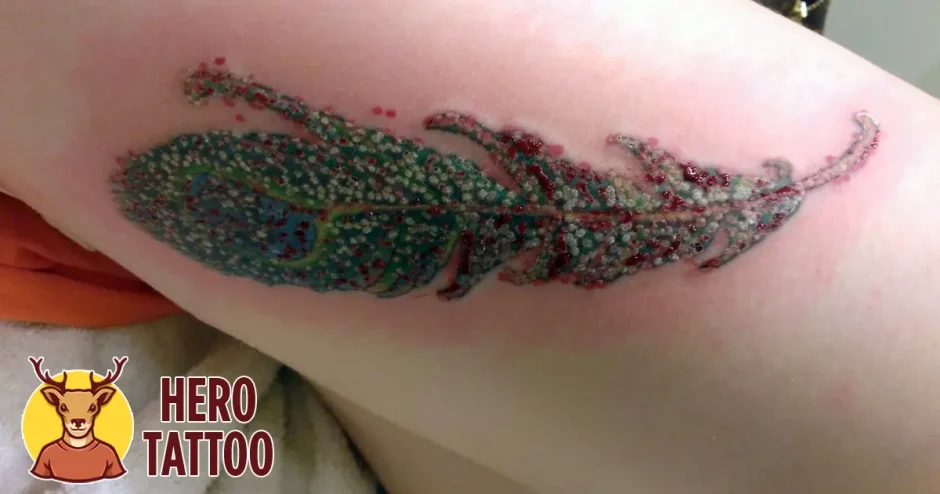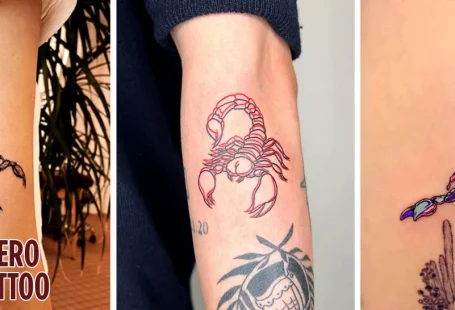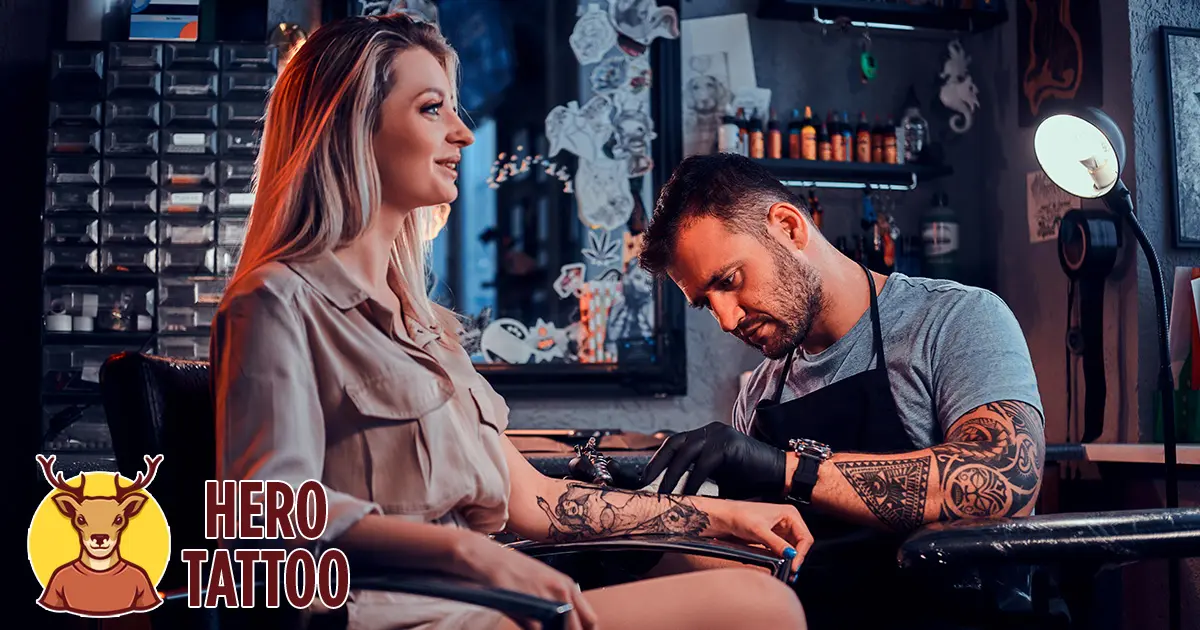Tattooing can cause superficial skin damage and tattoo infection, which are two of the most prevalent side effects. As the number of people who engage in body art continues to rise, the number of incidents resulting in infection has climbed dramatically. Poor tattooing techniques and tattoo artists who aren’t very good at their jobs are at the root of the problem.
Because tattooing is an intrusive operation that removes your skin’s protective layer that protects the rest of your body and organs, skin and blood infections are not uncommon after a tattooing session. However, it is all fun and games until you have to deal with a medical expert and get tested for viruses such as hepatitis B, hepatitis C, HIV, or bacteria such as Staphylococcus aureus (a kind of bacterium).
As a result, if you’re thinking about getting a tattoo and want to know about the potential side effects, you’ve come to the correct spot. We’ll take a deep dive into tattoo skin and pretty standard blood infections in the following paragraphs. So, without further ado, let’s get this show on the road.
Tattoo Infections: The Risk Of Infection Explained
Tattoos and Pathogens
Before we can figure out why tattoo infections happen, we need to know about all the possible causes of tattoo-related illnesses.
Our most significant organ, the skin, protects our bodies against germs, viruses, and pathogens, including those harmful to humans. During the tattooing process, the skin is repeatedly ad intensely pierced to have the ink placed in the dermis of the skin. The holes formed by the tattoo needle during the process result in an open wound that serves as an entry point for microorganisms.
Because of this, when bacteria or viruses enter the skin, they either migrate into the bloodstream or remain in the region where the tattoo was applied. As a result, skin and blood illnesses are shared among the population.
But why are microorganisms included in the tattooing process in the first place? Isn’t it the case that everything should be antiseptic, clean, and safe? When we talk about specialists and reputed tattoo shops, the majority of the time, the equipment and the surroundings are entirely pure and clean. However, there is always the opposite side of the coin.

The Source of Pathogens and Infections
So, why do infections, viruses, and germs have the ability to penetrate our skin and body through tattooing? Is it because we allow them to? It might be difficult to control events such as viruses and bacteria. It is critical for tattooists and tattoo studios to maintain a hygienic, disinfected, and spotlessly clean environment. However, the origins of viruses and bacteria might come from various sources. To keep viruses and bacteria from spreading, the time before and after getting a tattoo is clearly marked and divided, depending on the source of the pathogen.
- If the needle that is piercing the body is diseased, either because it was previously used on someone else or because it has been exposed to pathogens in another manner, the pathogens will enter the skin and the bloodstream during the tattooing procedure.
- Disease-causing pathogens can spread from one place to another. For example, if tattooing equipment is left out on an unclean work surface or in a dirty, hazardous environment, it will get dirty and spread the pathogens to the client when they get tattooed.
- Pathogens are transferred from the customer’s skin—people can have viruses and germs on their skin that they convey to the client. Because these infections cannot enter the body, however, nothing happens. However, because the needle produces holes in the skin, tattooing makes it possible for viruses to enter the body. The viruses usually enter through the tattoo needle, which serves as a delivery mechanism.
- When diseased clients come to a tattoo shop to get tattooed, the pathogens they carry are transferred from them to other contaminated clients. Their blood can infect a variety of items, such as the tattoo machine and the tattoo bed or chair. Because it isn’t visible, this blood has the chance to spread through the tattoo shop and infect other things and surfaces inside. This is because it isn’t visible.
Now that we know what the potential source of pathogen transmission is, let’s have a look at exactly when these bacteria travel from one object to another;
- Contamination happens when tattooists fail to adhere to proper hygienic measures throughout their work.
- It can also happen when tattoo artists use the same equipment for a lot of customers, even after they’ve cleaned it.
- When clean and worn tools come into contact, microorganisms can spread quickly.
- These pathogens can also spread when sterile tools are used on dirty surfaces or the other way around.
- It is possible to get contaminated if single-use items, including gloves, bandages, and other equipment, are not properly disposed of after use.

Which Pathogens Cause Infections? – The Viruses and Bacteria Causing Infections
A variety of illnesses can emerge due to contaminated surfaces, equipment, and even the skin of the client. How can germs and viruses caused by tattooing go wrong?
Specifically, when it comes to bacterial diseases, we’re referring to the terms listed below:
- MRSA (Methicillin-resistant Staphylococcus aureus)
- Streptococcus
- Pseudomonas sp.
- Clostridium species are a kind of bacteria.
- Tetanus
- Tuberculosis
- Leprosy
When it comes to viral infections, on the other hand, the problem is generally caused by one of the viruses listed below:
- Hepatitis B is a virus that infects the liver.
- Human Immunodeficiency Virus (HIV)
- Hepatitis C
- Herpes Simplex Virus are all examples of viruses.
- Warts, molluscum, and condylomata are all types of warts (viruses causing local infections).
According to the Centers for Disease Control and Prevention, tattooing is a reported source of infections and illnesses; the most prevalent are hepatitis B, hepatitis C, and warts. People who get tattoos are likely to get hepatitis B and C because these viruses can spread to people with only a small amount of inoculum (pathogen for the first contact) before they become contagious.
Fortunately, there hasn’t been a significant increase in the number of instances of bacterial illnesses, though exact figures are unavailable. In general, it is assumed that the immune system can combat the majority of bacteria and viruses. However, those with weak immune systems are more likely to get sick if they are directly exposed.
Infections Cause Symptoms and Have Resulted in Death
The situation is fundamental regarding the signs and symptoms of tattoo infections. The following are the signs and symptoms:
- Continuous tattoo oozing and bleeding that does not stop within the first 24 hours.
- Inflammation of the tattooed region results in a rash, redness, discomfort, and lumps.
- Tattoo leakage and failure to dry out are two common problems.
- As a result of the fever and general bad health,
- Chills, tremors, and sweating are familiar sensations.
- Pain in the tattooed region is becoming increasingly severe.
It is becoming more challenging to treat the edema and discharge.
Most of the time, infections are merely superficial and impact only the tattooed skin. Quick medical intervention may be required in severe infection situations, along with a surgical incision to remove the infection and prevent it from spreading further. Severe illnesses may manifest themselves as enlargement of an entire leg.
Skin infections can sometimes become blood infections, which is terrible. Bacteria may be transported from the tattoo site into the bloodstream and then throughout the rest of the body. Consequently, sepsis, high fever, organ dysfunction, and even death are possible consequences of this situation. Fortunately, timely medical care and antibiotic therapy can help to prevent this from happening.
It is critical to be extra cautious and aware of the signs and symptoms of mycobacterial infection and the consequences of mycobacterial disease. This form of illness progresses at a snail’s pace. It is typically derived from polluted tap water used to dilute tattoo ink before application. Mycobacterial diseases are extremely uncommon and can only be detected with specialized diagnostic samples.
Tattoo Infections in a Variety of Situations
It is important to note that tattoo infections differ depending on the design and location of the tattoo. If a tattoo is put in a place that is very moist, like the armpits or the lip, the chances of long-term healing problems and even infection go up.
Even if there is no initial contact with pathogens during the tattooing process, moisture is always present, making it harder for the tattoo to dry out and heal as it should. In addition, perspiration, which draws germs and bacteria, helps them grow and develop.
In certain instances, the type of tattoo or even how it is performed might cause an infection. For example, stick-and-poke tattoos have been linked to infections in the past because of the way they were done in the past. Only the needle was used to get the tattoos.
Because stick-and-poke tattoos can be done at home, people often utilize ill-suited and filthy instruments, such as pen ink. Inflammation and infection arise as a result of this.
A common occurrence is that the treated region begins to blister excessively, and individuals refrain from washing and sanitizing it. As a result, the affected area becomes inflamed and infected, and instead of having clear skin, people are left with scars on their skin.

Infection from a tattoo during the course of the healing process
Tattoos can become infected long after they have been completed, which is something that is less well known. For as long as the tattoo is in the healing period, microorganisms might make their way into the body through the tattoo. Remember that a new tattoo is an open wound that can take up to seven days to completely shut down and begin the process of healing (forming new skin layers and drying out).
- It is critical to avoid potentially infectious environments and circumstances at all times when sick. While your tattoo is healing, you should avoid allowing your pets to sleep in the same bed as you. Germs and bacteria from your pet can easily make their way to your healing tattoo and create an infection.
- If you leave a tattoo alone after it has stopped bleeding and leaking, you run the risk of getting it infected or irritated because there is too much moisture.
- It is considered healed if the tattoo is coated with lotion and Vaseline. While the tattoo is healing, the substance might clog the pores of the tattoo, preventing it from breathing and drying. As a result, the moisture that has been retained may cause irritation and infection.
- The material can adhere to the tattoo and transfer possible germs and bacteria into the wound. If you do not wear loose clothing while the tattoo is healing, make sure to dress in loose clothing while the tattoo heals. As a result, you will have to remove the material from the tattoo, which may cause the injury to reopen and put you in danger of infection.
Tattoo Infection Treatment
Mild tattoo infections, such as pimples and rashes, may usually be treated at home using over-the-counter medications. By using an antibacterial ointment, washing the tattoo properly, and eating a healthy diet, you may be able to be sure that your body will fight off the infection on its own and not need medical help.
Nevertheless, if the infection is severe and produces severe symptoms such as swelling, drainage, fever, and rising discomfort, it is necessary to see a doctor immediately. In these types of situations, medical intervention is essential. Your doctor will need to figure out what caused you to get sick before he or she can give you the right treatment.
Depending on the severity of the condition, antibiotics can be used to control the infection in most instances. These antibiotics can be administered for a few weeks to many months.
Antibiotics will not assist in the case of a bacterial infection, particularly MRSA. An abscess is the most common manifestation of this type of bacterial infection. Rather than treating the infection itself, abscess therapy (draining) is usually done instead of treating the infection itself.
In severe cases of infection, surgical intervention may be required, which is unfortunate.In most cases, a doctor would remove the contaminated skin and tissue to stop the infection from spreading to healthy tissue and spreading even more across the body.
Tattoo Infection Preventative Measures
After reading all of this information, we can see that getting a tattoo would be difficult without the concern that anything might go wrong during the procedure. Even though tattoo infections can exist, they are relatively simple to avoid and prevent if you follow these simple guidelines. How you, as a customer or as a tattoo artist, may avoid getting a tattoo infection is as follows:
As a client
- You must arrive at your tattoo session freshly bathed and shaven as a client.
- Avoid putting your hands near the tattoo without first cleansing and sanitizing your hands.
- Follow the aftercare instructions to the letter.
- For the first 24 to 48 hours after getting a tattoo, avoid washing or applying lotion to it.
- Do not share a bed with your dogs unless it is necessary.
- Make an effort to dress comfortably.
- Swimming and other activities that cause you to perspire should be avoided.
- The use of petroleum-based products, such as Vaseline, should be avoided.
- Only get inked at tattoo parlors that are licensed and trustworthy.
It’s important to know whether or not you’re a tattoo artist who follows safety rules, like sterilizing their equipment and replacing gloves when they get dirty, cleaning the bed or chair they’re working on, replacing their gloves all the time, and so on.
As a tattoo artist
- Only purchase appropriate equipment from trusted vendors (especially the ink).
- Provide tattoo salon clients with sterilized and sanitized client-specific zones.
- Only clean and sterilized equipment should be used.
- Tattoo needles should be brand new and sanitized.
- Do not share your tattooing equipment with other tattoo artists.
- Keep an eye on the area where you keep and arrange your equipment; make sure that the space is clean and disinfected before using it.
- When dealing with a customer, gloves should always be worn (preferably nitrile gloves).
- It would be a good idea to keep in mind that latex gloves might make some customers feel uncomfortable.
- Check to see that you have appropriate storage containers with lids.
- Make sure you have clean linens or disposable towels on hand to protect your clients.
- Make sure you give tattoo wrapping materials that are clean and sterile.
Customers and tattooists should be aware of and adhere to the following infection protection procedures. Tattoo artists must follow strict contamination control procedures, which include detailed instructions on how to clean, disinfect, and handle contaminated or blood-stained equipment, as well as other rules and regulations.
Finally, note that
There is no question that the possibility of contracting a tattoo infection exists at all times. However, you can avoid contracting the disease by selecting the appropriate tattoo artist and adhering to the established guidelines as a tattooist. Tattooing is typically considered to be risk-free. Therefore, you should not avoid getting inked because of this possibility.
In general, make sure you eat healthily, drink enough water, and concentrate on strengthening your immune system. This way, even if you become exposed to germs, bacteria, or viruses, your immune system will be ready to fight them off. And, before you ink and get inked, pick correctly and go for qualified and respected specialists.
Sharing is caring!






